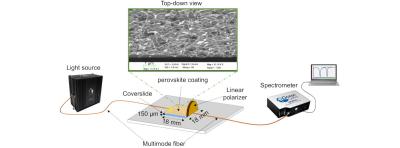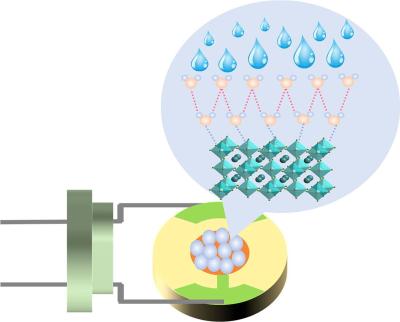Researchers report electrically assisted amplified spontaneous emission in perovskite LEDs
Researchers at Imec have reported a metal halide perovskite LED (PeLED) stack that emits 1,000x more light “than state-of-the-art OLEDs”. The team developed a transparent PeLED architecture, that combines low optical losses with excellent current-injection properties.
In this work, the team showed that perovskite semiconductor optical amplifiers and injection lasers are within reach using this type of transparent PeLED.






